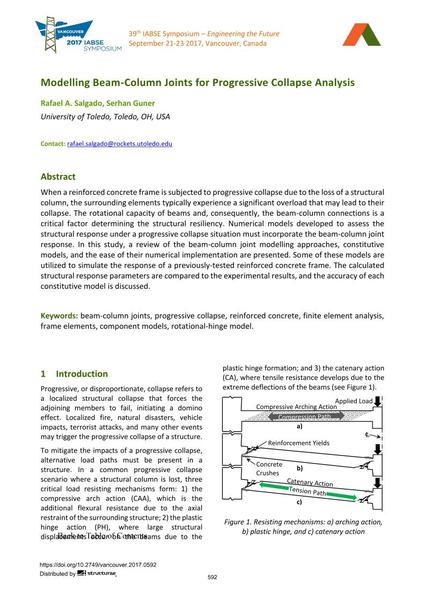Modelling Beam-Column Joints for Progressive Collapse Analysis

|
|
|||||||||||
Détails bibliographiques
| Auteur(s): |
Rafael A. Salgado
(University of Toledo, Toledo, OH, USA)
Serhan Guner (University of Toledo, Toledo, OH, USA) |
||||
|---|---|---|---|---|---|
| Médium: | papier de conférence | ||||
| Langue(s): | anglais | ||||
| Conférence: | IABSE Symposium: Engineering the Future, Vancouver, Canada, 21-23 September 2017 | ||||
| Publié dans: | IABSE Symposium Vancouver 2017 | ||||
|
|||||
| Page(s): | 592-599 | ||||
| Nombre total de pages (du PDF): | 8 | ||||
| Année: | 2017 | ||||
| DOI: | 10.2749/vancouver.2017.0592 | ||||
| Abstrait: |
When a reinforced concrete frame is subjected to progressive collapse due to the loss of a structural column, the surrounding elements typically experience a significant overload that may lead to their collapse. The rotational capacity of beams and, consequently, the beam-column connections is a critical factor determining the structural resiliency. Numerical models developed to assess the structural response under a progressive collapse situation must incorporate the beam-column joint response. In this study, a review of the beam-column joint modelling approaches, constitutive models, and the ease of their numerical implementation are presented. Some of these models are utilized to simulate the response of a previously-tested reinforced concrete frame. The calculated structural response parameters are compared to the experimental results, and the accuracy of each constitutive model is discussed. |
||||
